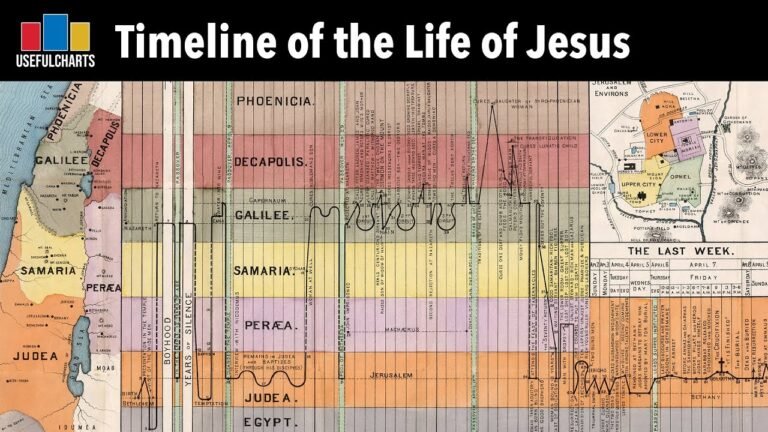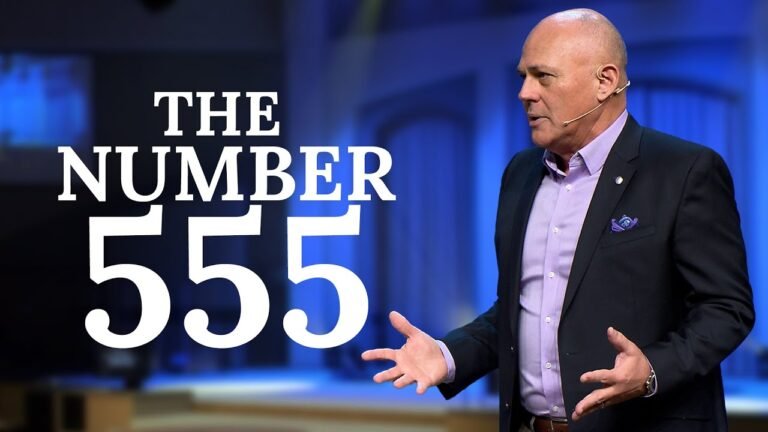The Chronology of Jesus’ Ministry
The ministry of Jesus Christ is a pivotal chapter in religious history, marked by transformative teachings and miraculous events that shaped the foundations of Christianity. Understanding the Jesus ministry timeline not only provides insight into the significant moments of His life, from the early days of preaching to the profound impact of His crucifixion and resurrection, but also illuminates the profound lessons that continue to inspire millions today. This exploration invites readers to delve into the key milestones and the spiritual significance of Jesus’ journey on Earth, revealing the enduring legacy of His message and mission.
What is the timeline of Jesus’ ministry?
Jesus’ ministry is generally believed to have commenced between AD 27 and 29, marking the beginning of his profound teachings and miraculous works that captivated followers across Judea and Galilee. This transformative period continued until approximately AD 30 to 36, during which he established a lasting impact on spirituality and ethics that resonates to this day. His journey, characterized by compassion and wisdom, ultimately culminated in events that would change the course of history and inspire countless generations.
What was the duration of Jesus’ ministry?
Jesus’ ministry spanned three full years, beginning with an initial period leading up to his first Passover. This timeline has been widely recognized since the time of Eusebius and remains the established framework for understanding the duration of his public ministry. During these years, Jesus profoundly impacted the lives of many, delivering teachings and performing miracles that would shape the foundation of Christianity.
What are the three phases of Jesus’ ministry?
The ministry of Jesus can be understood through distinct periods that highlight different phases of his mission on Earth. The first period, Preparation, spans from his conception until his baptism, setting the stage for his public life. Following this is the Introduction phase, which begins at his baptism and leads up to the start of his Galilean ministry, marking an essential transition in his journey.
The Galilean Ministry constitutes the third period, characterized by around 18 months of focused work primarily in Galilee. During this time, Jesus engaged with diverse communities, performed miracles, and delivered teachings that laid the foundation for his impact on countless lives. Each period serves to illuminate the progression of his work and the unfolding of his divine purpose.
Unraveling the Timeline of Christ’s Teachings
The teachings of Christ have evolved over centuries, shaping the foundation of Christianity and influencing countless lives. From the early days of His ministry, marked by parables and sermons, to the establishment of the Church, each phase of His message has resonated with profound significance. The Sermon on the Mount, for instance, encapsulated core principles of love, compassion, and humility, laying the groundwork for ethical living and community values that continue to inspire today.
As the timeline of Christ’s teachings unfolds, we witness the adaptation of His messages through various cultural lenses, enriching the faith and expanding its reach. The early Church Fathers interpreted His words to address the challenges of their times, while the Reformation sparked a renewed emphasis on personal faith and scripture. This dynamic interplay of tradition and reinterpretation has ensured that Christ’s teachings remain relevant, inviting each generation to engage with His message in a meaningful way.
Key Moments in the Life of Jesus
The life of Jesus is marked by transformative events that have left a lasting impact on humanity. From his humble birth in Bethlehem, heralded by angels and visited by shepherds and wise men, to his baptism in the Jordan River by John the Baptist, each moment symbolizes a new chapter in his mission. The miracle of turning water into wine at the wedding in Cana not only showcased his divine power but also underscored the importance of joy and celebration in life.
As Jesus traveled through Galilee, he performed numerous miracles, healing the sick and feeding the hungry, embodying compassion and love for all. His teachings, often delivered through parables, challenged societal norms and emphasized forgiveness, kindness, and faith. The culmination of his journey came with the Last Supper, his crucifixion, and the resurrection, events that not only shaped the course of Christianity but also inspired millions to seek a deeper understanding of love, sacrifice, and redemption.
A Journey Through the Savior’s Mission
In the heart of every spiritual quest lies the transformative journey of understanding a greater purpose. The Savior’s mission was not merely about miracles and teachings; it was a profound call to humanity to embrace love, compassion, and redemption. Through parables and acts of kindness, He illuminated the path for countless souls, inviting them to reflect on their own lives and the choices they make. Each step He took was a testament to unwavering faith, urging individuals to connect with their divine potential and seek a deeper relationship with one another and with God.
As we traverse this path alongside Him, we discover that His mission resonates far beyond the pages of scripture. It challenges us to embody the virtues of forgiveness and grace in our daily interactions, inspiring us to be beacons of hope in a world often shrouded in darkness. By embracing the essence of His teachings, we embark on our own journeys of self-discovery and service, fostering communities rooted in love and understanding. Ultimately, the Savior’s mission serves as both a guide and an invitation, encouraging us all to live out our faith with purpose and passion.
Milestones of Faith: Jesus’ Ministry
Jesus’ ministry was marked by transformative milestones that reshaped the spiritual landscape of his time. From his baptism by John the Baptist, symbolizing the initiation of his divine mission, to the Sermon on the Mount, where he unveiled the core tenets of love, mercy, and humility, each event revealed his profound teachings. Miracles such as the feeding of the 5,000 and the healing of the sick illustrated his compassion and authority, captivating the hearts of many. The culminating moments of his ministry, including the Last Supper and the crucifixion, underscored a message of sacrifice and redemption, leaving an indelible legacy that continues to inspire faith around the world.
Mapping the Path of Redemption
In the journey of life, the path to redemption often emerges as a winding road filled with challenges and revelations. Every misstep serves as a lesson, guiding us toward deeper self-awareness and understanding. As we navigate through our struggles, we uncover the strength within us, transforming our past mistakes into stepping stones for growth. This process not only reshapes our identity but also deepens our connections with others, fostering compassion and empathy along the way.
The act of seeking redemption is not merely about seeking forgiveness; it is a profound commitment to change. Embracing vulnerability allows us to confront our fears and insecurities, paving the way for genuine transformation. As we map out our path, we learn to celebrate the small victories, cultivating resilience and hope. Ultimately, this journey invites us to become agents of change in our own lives and in the lives of those around us, weaving a narrative of renewal and possibility that inspires us to move forward with intention and purpose.
The timeline of Jesus’ ministry offers a profound insight into the transformative journey of faith and purpose. By tracing his teachings, miracles, and interactions, we uncover the rich tapestry of his influence on countless lives. This journey not only shapes our understanding of spirituality but also inspires us to reflect on our own paths. Embracing the lessons from this timeline invites us to engage more deeply with our beliefs and the world around us.







